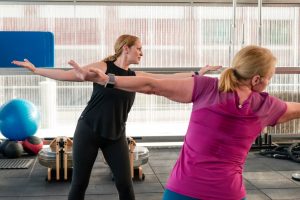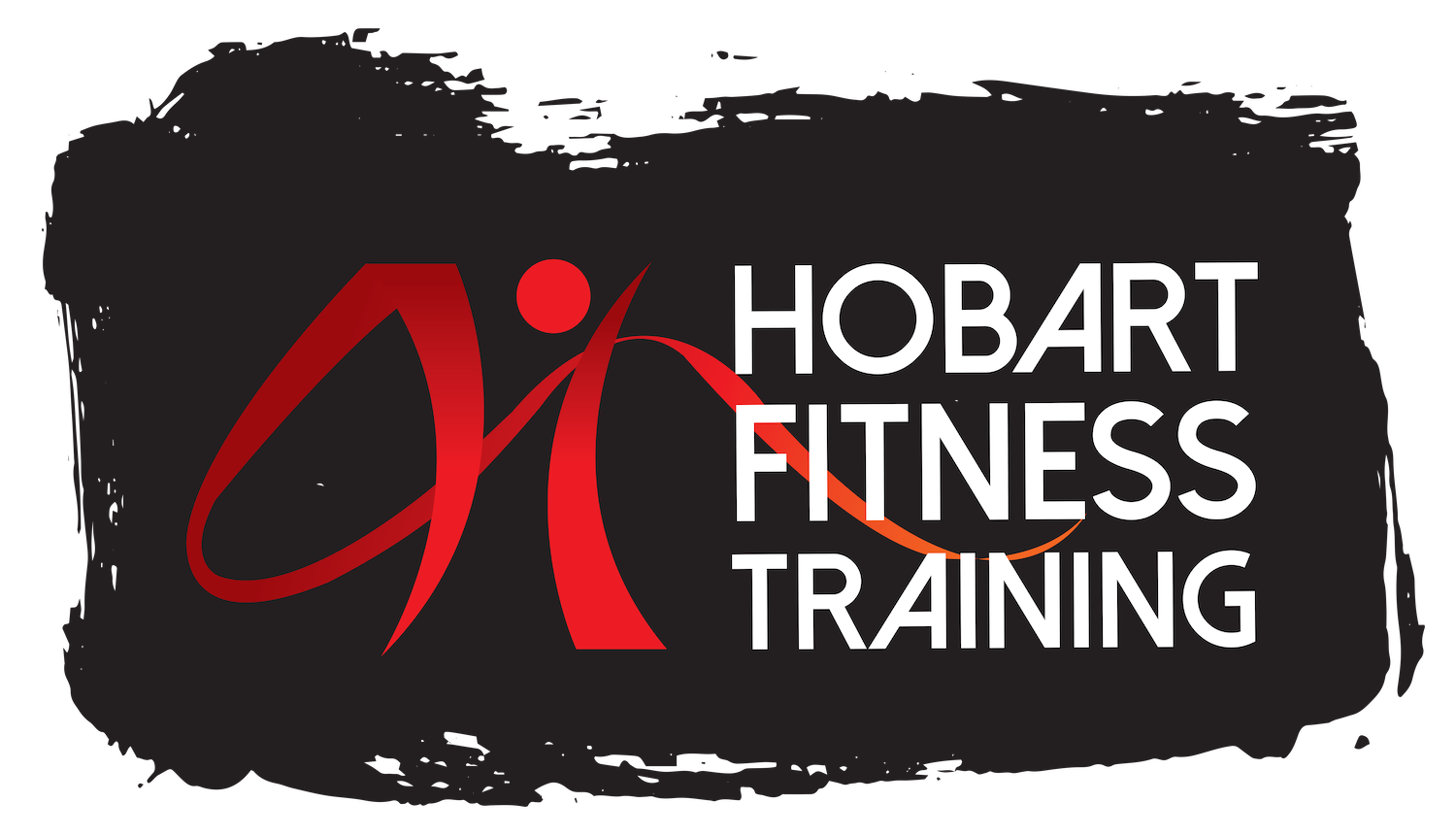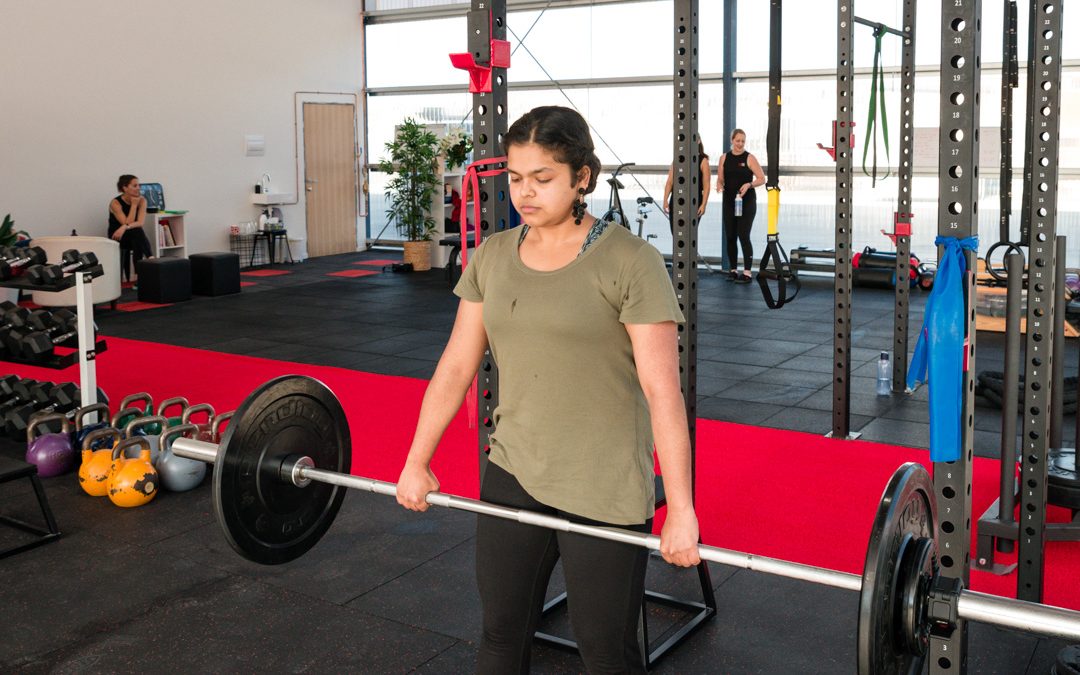Are you daunted by the thought of starting a fitness program at a gym or fitness studio?
Fear of the unknown is scary. But that doesn’t mean we should miss the opportunity to try something new. When the negative self-talk and doubt creeps in, try these three evidence-based tools to give yourself a little bit of a boost.
On the surface, gyms can seem like a judgment environment. Stereotypically, they consist of protein-shake filled athletes, model-worthy girls flaunting their abs, and men whose muscles would put David Beckham, in his prime, to shame. But as the fitness industry increases in popularity, it isn’t just steroid-pumped participants occupying the gym floor these days.
In fact, second only to walking, attending a gym or fitness studio is the most popular physical activity for Australian adults. But despite knowing that, deciding to join a gym, personal training, or fitness studio, and then actually proceeding to turn up, can trigger even the most self-confident of us. The good news? There are many different types of gyms and personal training facilities these days. For example, small friendly boutique studios (like ours!) can offer a welcoming environment to even the most unexperienced gym goer.
Everybody deserves to find activities that nourish their body and mind. Whether that is a group class, working with a friendly and helpful personal trainer, or joining a small group workout session. Here are three evidence-based strategies that can help you take that first step towards giving the gym a go. And for the right reasons.
- How would you treat a friend?
When we are considering going to a gym, or any new activity for that matter, it can be easy to bring on the negative self-talk. ‘I am not fit enough to go the gym’ or ‘everyone will judge me’ or ‘I’m not the gym type’ are phrases heard all too often.
Doing the ‘how would you treat a friend’ exercise, a component of Compassion Focused Therapy, is a great way to evoke some self-kindness. Importantly, this exercise allows you to shift your perspective on the situation, as we often give love and understanding much more freely to others than we do to ourselves.
Here are some tips on how to get started…
- Write down your worries about this new situation. What are your thoughts, feeling, and emotions? For example, you may be concerned that you are too unfit to the join the gym, and that you will feel out of place and judged.
- Now imagine a friend comes to you for advice on this same situation. How would you respond to them? What advice would you offer them? And in what tone of voice?
- Reflection time: Were there any differences between how you responded to yourself and how you would treat a friend? What parts of the advice that you gave your friend could you take for yourself? Like you would see a friend, could you see yourself as courageous for trying something new?
2. It may be true, but is it helpful?
I know what you are likely thinking. But what if the thoughts I am having are true? What if the so called ‘negative self-talk’ is actually fact? Well, to be honest, it actually doesn’t matter if it is true or not.
Acceptance Commitment Therapy asks individuals to ACCEPT any stressful thoughts they encounter (true or untrue), and then COMMIT to an action that leads them towards the life they want to live, and the values that are important to them.
Give this a try…
- AWARE: Become aware of the thoughts you are having.
- ACCEPT: Radically accept the thoughts you are having. It doesn’t matter if they are true or untrue, they just are.
- ACTION: Choose an action that aligns with your values, instead of your thoughts. For example, you may value a healthy lifestyle and trying new things, so you decide to join up to a new personal training program despite being scared and in self-doubt!
Remember, we are not our thoughts. In the wise words of the founder of Acceptance Commitment Therapy…
‘Who do you want making decisions for you in your life – your anxiety, depression, anger, or you?’ – Kirk Strosahl
- And BREATHE…
So, you’ve made the decision to give the gym, a personal training studio, or the likes a try. Good on you. Being scared and doing something new is a courageous act.
But now your thoughts may be racing to that first time you walk into the gym? How am I going to feel? Will others judge me? Don’t worry, we have an exercise for you.
Fun fact. A 2006 American study found that people who spent 15 minutes doing a mindful breathing exercise reporting lower levels of distress when shown upsetting images, when compared to people who were asked to spend the time worrying or thinking of nothing in particular.
What does this tell us? Well, if we calm our nervous system down via deep breathing, we can approach a situation a little more calmly. So, try this exercise in the days leading up to your first-day, or even in the car right before.
- Sit down somewhere comfortable and quiet.
- Take a normal breath and feel it rise and fall in your chest and abdomen.
- Now take a deep breath. Feel the difference. Breathe in for a count of four and out for a count of six.
- Repeat on the in-breath, I am calm. Repeat on the out-breath, I am courageous..
- Return to your normal breathing. When your mind wanders, just gently bring it back to focusing on the breathing..

And there it is! Three evidence-base strategies to help you take that first step toward trying something positive and new. And remember, training in a gym environment shouldn’t be a punishment. Find a place you enjoy, where you feel welcomed. A place that you look forward to attending, and which nourishes your mind and soul, as well as your body.
Remember, you are worthy of looking after your body and mind. And if a gym or studio can help you achieve that, then don’t let that self-doubt hold you back.
Go get them!
Eleni Kalimnios is an elite athlete with the Tasmanian Institute of Sport, accredited Behavioural Scientist, and qualified personal fitness trainer. Follow her at @recess.forthemind on Instagram.
Eleni is sponsored by PATHWAYS PAIN RELIEF, https://www.pathways.health – an app focused on using neuroplasticity to rewire your brain and overcome chronic pain. A great resource to use during chronic pain recovery.


Recent Comments